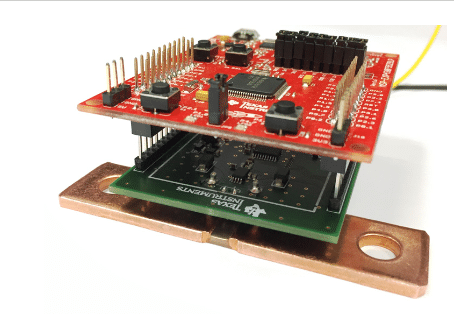This comprehensive solution ensures accurate current detection for various applications, enhancing industry performance and reliability.

This reference design TIDA-03050 by Texas Instruments addresses the need for precise current detection across a broad range, from milliamperes to kiloamperes, using a busbar-type shunt resistor. With the escalating demand for high-capacity batteries in electric vehicles (EVs) and hybrid electric vehicles (HEVs), there’s a growing requirement for current sensors capable of handling larger spans while maintaining high accuracy. Achieving accurate measurements over three decades, ranging from milliamps to thousands of amps presents a significant challenge due to the substantial noise inherent in such systems. However, this design overcomes this obstacle by integrating advanced components, including a high-resolution analog-to-digital converter (ADC) and high-accuracy current shunt monitors from TI.
Key features of this design include exceptional full-scale accuracy rates tailored to various current ranges and operating temperatures. At 25°C, it achieves an impressive 0.02% full-scale range (FSR) accuracy for currents below 20A and maintains less than 0.05% FSR accuracy for currents ranging from 20A to 1500A. Even under more challenging conditions at 50°C, the design ensures accuracy levels of 0.1% FSR for currents below 20A and 0.25% FSR for currents from 20A to 1500A. This versatility enables the system to cater to a wide range of current measurements, from 50mA to 1500A, with the added flexibility to configure for different current spans. Moreover, the design supports both high-side and low-side sensing configurations and facilitates precise measurement of bi-directional currents within the range of -1500A to +1500A.
This reference design’s applications span various industries, primarily focusing on the automotive and industrial sectors. In automotive applications, it finds utility in critical components such as battery junction boxes, battery management units, DC/DC converter systems, electric power steering systems (EPS), fuel cell control units (FCCU), powertrain current sensors, and both wired and wireless high-voltage battery systems. On the industrial front, it serves in diverse capacities, including battery packs with protection, gauge, and external communication capabilities, CT detector modules, multimodule batteries with CAN or daisy-chain configurations, PET demodulator modules, portable ultrasound devices, as well as premium and standard ultrasound equipment, and X-ray dynamic and static detectors.
TI has tested this reference design with a bill of materials (BOM), schematics, and other data. The company’s website has additional data about the reference design. To read more about this reference design, click here.





